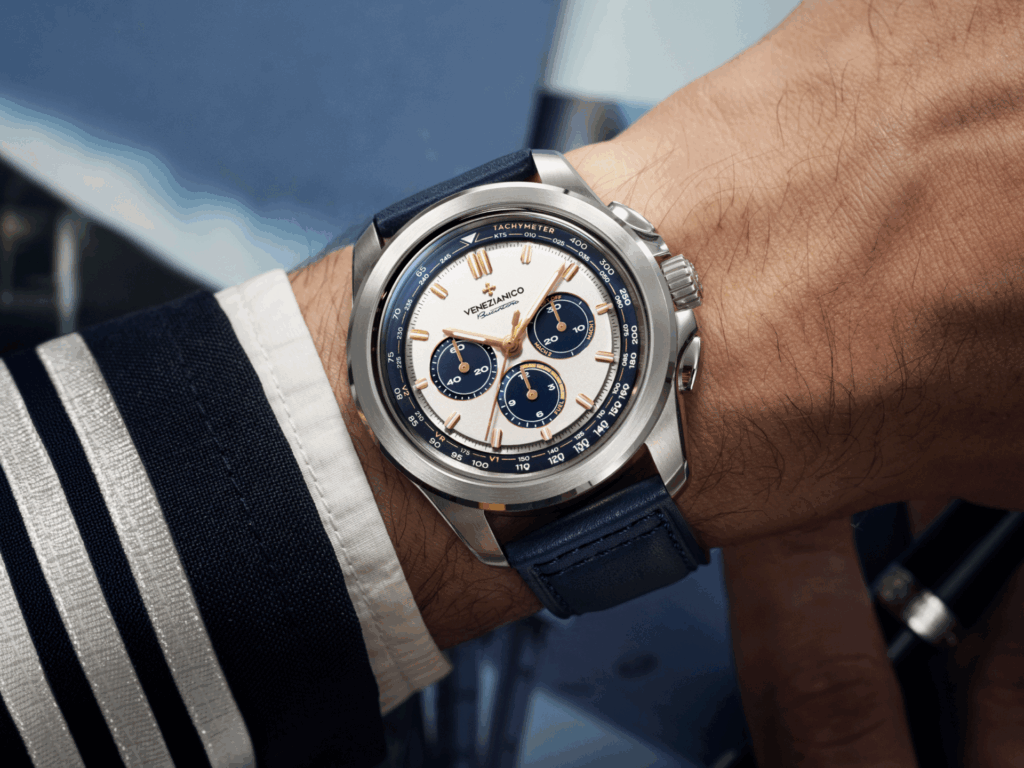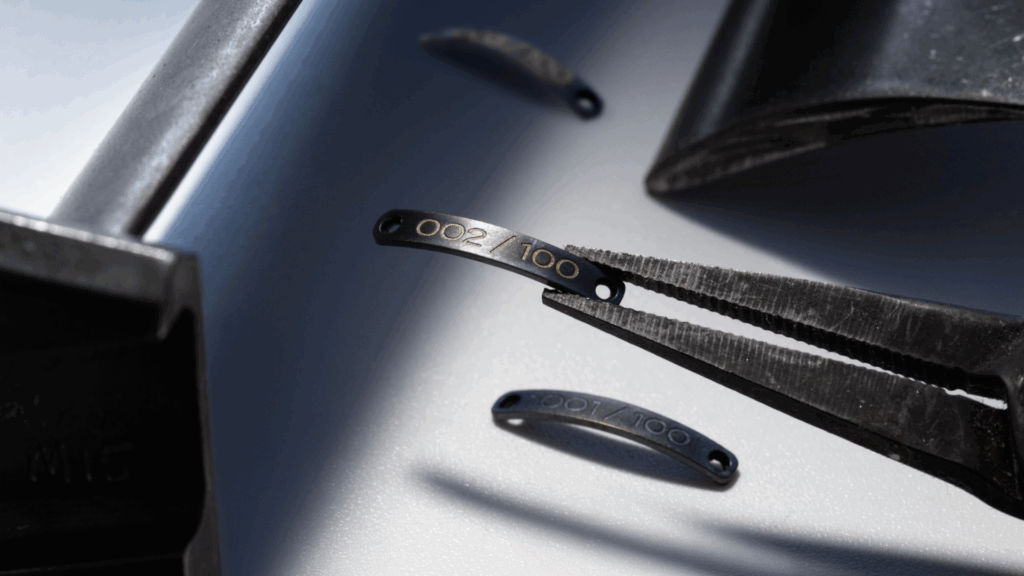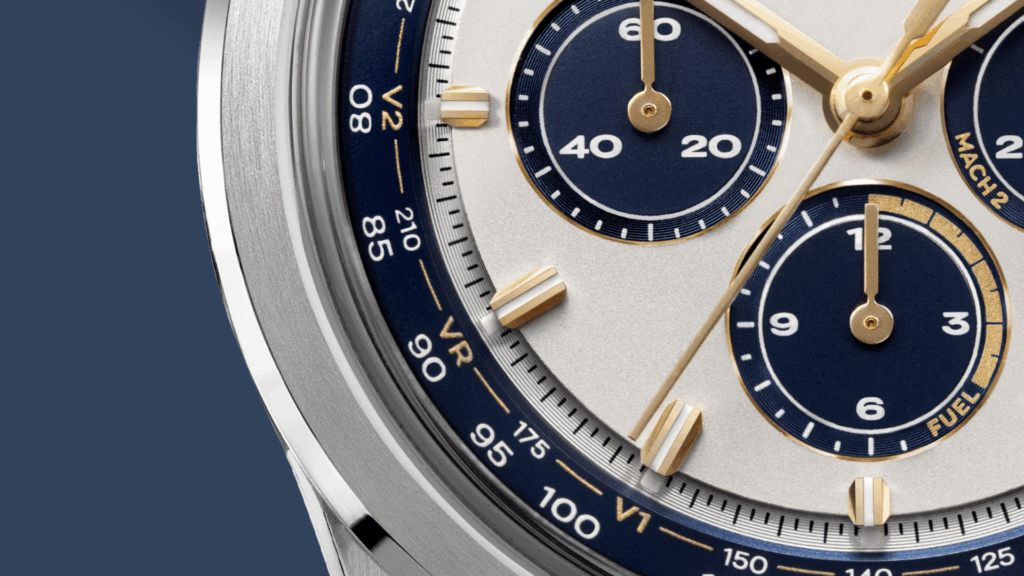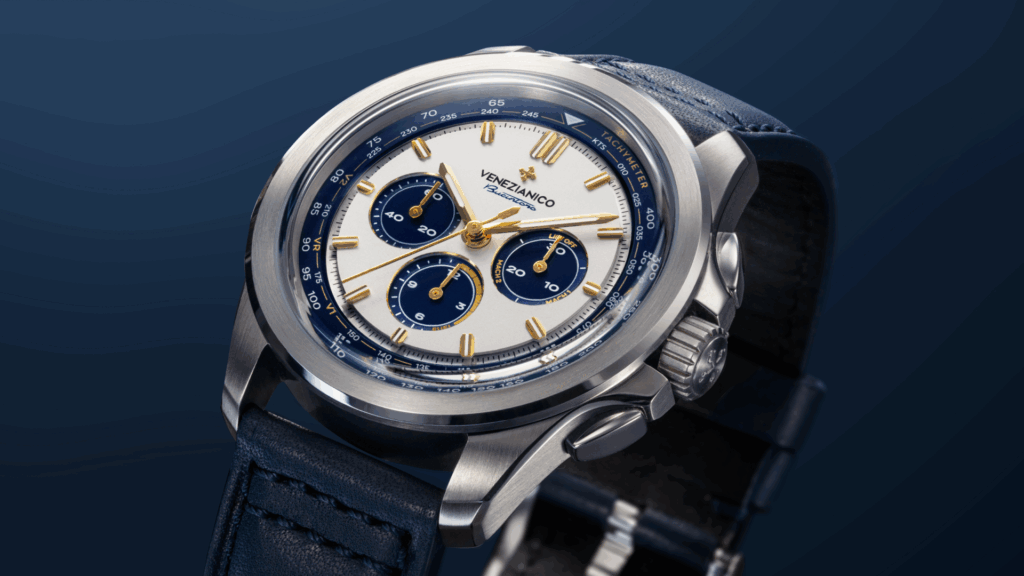The Morelli brothers have created something rather spectacular with their latest timepiece. Their Bucintoro 1976 chronograph carries actual fragments of the Concorde on its case, offering collectors a tangible link to the world’s most famous supersonic aircraft. Limited to just 100 pieces, each timepiece houses a meticulously restored Swiss movement and incorporates titanium from the legendary jet.

The Concorde remains one of the enduring icons of the supersonic age. From 1976 to 2003, this remarkable aircraft transformed transatlantic travel, whisking passengers from Paris to New York in just three and a half hours while cruising at Mach 2.04, that’s 2,179 kilometres per hour at 17,000 metres. The engineering achievement was staggering, demanding materials and precision that pushed the boundaries of possibility.
Venezianico’s Bucintoro 1976 pays homage to that feat through the second instalment of its Legacy of Time series. Following the space-inspired Bucintoro 1969, which celebrated the Apollo missions, this new model honours another pivotal moment when humanity redefined the concepts of time and distance. Venezianico has approached this tribute with the same precision that made Concorde possible, fusing historical mechanics with authentic materials from the aircraft itself.
Restoring the Lemania 1873
At the core of this chronograph lies the Lemania 1873 “new old stock” (NOS) movement, a hand-wound calibre that epitomises Swiss horological tradition. Venezianico sourced 100 units from private European collections, each requiring extensive restoration. Master watchmaker Daniele Zorzetto led the painstaking 18-month process.
Many movements arrived with missing upper bridges, demanding complete reconstruction through careful study and experimentation. Original 1970s decorations were reproduced using traditional finishing and inking techniques, preserving period authenticity while achieving full mechanical reliability. Rather than sourcing new mechanisms, the team chose the more demanding path of revival, bringing dormant timepieces back to life with the same attention to detail that characterised their original manufacture.
Concorde Titanium, Reimagined
The titanium plate mounted on each case side provides the most tangible connection to Concorde’s legacy. Cut from original engine blades sourced through Concorde Collectables from certified lots 3464 and 3335—the final available pieces—this titanium-nickel alloy accumulated thousands of supersonic flight hours above the Atlantic, making every plate a direct witness to an unrepeatable era.

Each plate is engraved in gold with its limited-edition number, transforming functional aircraft components into horological art. This marriage of restored Lemania movement and Concorde titanium creates a bridge between Swiss watchmaking tradition and British-French aviation innovation. To ensure authenticity, every owner receives documentation confirming that their timepiece contains genuine Concorde material, which is an increasingly vital factor in today’s collectible-watch market.
Instruments of Flight on the Wrist
The dial design draws inspiration from Concorde’s analogue cockpit instruments. An ivory base supports three aviation-blue counters that echo the aircraft’s inaugural supersonic year of 1976. A 42-millimetre 316L steel case and a 1.6-millimetre domed sapphire crystal with anti-reflective treatment enhance legibility while lending vintage character. Gold-coloured baton indices and hands feature white Super-LumiNova inserts for visibility in all lighting conditions. The central chronograph seconds hand serves as the primary speed-measurement tool.

The details speak to pilots and enthusiasts alike. The internal tachymeter bezel displays the three takeoff phases—V1, VR, and V2—familiar to aviators. The minute counter integrates Mach 1 and Mach 2 references, celebrating the moment an aircraft breaks the sound barrier. The hour counter bears the marking “Fuel,” honouring the instruments that monitored Concorde’s formidable consumption. For perspective, Concorde burned about 17 litres per 100 passengers per 100 kilometres, which coincidentally matches the watch’s strict 100-piece limitation.
Packaging the Story of Two Cities
The timepiece features the signature Sansovino steel bracelet alongside an Italian-made leather alternative. Water resistance reaches 10 atmospheres, ensuring practical wearability despite the watch’s historical focus. The 49-millimetre lug-to-lug measurement and 11.5-millimetre thickness provide comfortable proportions for most wrist sizes.

Each watch arrives in a handcrafted oak case made from the same wood as Venice’s historic briccole, the posts that mark safe passage through the lagoon city’s waters. The aviation-blue lacquer finish mirrors both Concorde pilot uniforms and the dial colour scheme, reinforcing the connection between Venice’s maritime heritage and aviation history.
A Union of Time and Flight
The Bucintoro 1976 brings together two disciplines that shaped the late 20th century: Swiss watchmaking and supersonic aviation. Both demanded advanced materials, exacting mechanics, and manufacturing precision that stretched the limits of their eras.
Its name references the original Bucintoro, the ceremonial state galley of Venice’s Doges, once used to mark the city’s symbolic marriage to the sea. This modern edition marks a different kind of union between timekeeping and flight, tradition and modern engineering, capturing a moment when craftsmanship met speed.



